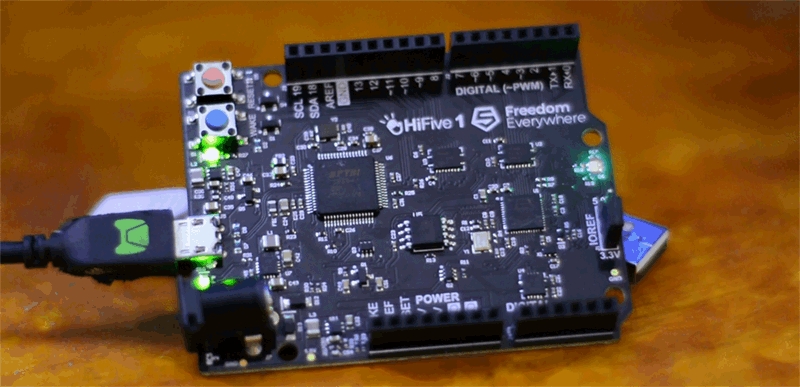Microcontrollers
Microcontrollers: Core Concepts

What is a Microcontroller?

A microcontroller (MCU) is a compact integrated circuit that combines a processor (CPU), memory (RAM/ROM), and programmable input/output peripherals on a single chip. It’s designed to execute specific tasks in embedded systems, such as controlling motors, reading sensors, or managing communication protocols. Microcontrollers are the "brains" of devices like washing machines, drones, and industrial robots.
Key Components of a Microcontroller
1. Registers
Registers are small, fast storage locations within the CPU used to hold data, addresses, or control signals during operations. They act as temporary "scratchpads" for calculations and system control.
Types of Registers
Data Registers: Store numeric values for arithmetic/logic operations.
Control Registers: Configure peripherals (e.g., timers, PWM, UART).
Status Registers: Track CPU state (e.g., carry flags, interrupt status).
Example (PWM Registers in ARM LPC2148):
PWMIR (Interrupt Register): Flags interrupts from PWM match events.
PWMTCR (Timer Control Register): Starts/stops the PWM timer.
PWMMR0 (Match Register 0): Sets the PWM period by comparing against the timer counter.
2. Interrupts

Interrupts are signals that pause the CPU’s current task to handle urgent events (e.g., sensor input, timer overflow). They ensure real-time responsiveness in robotics and automation.
Interrupt Workflow
Event Occurs: A peripheral (e.g., timer, sensor) triggers an interrupt.
CPU Response: The CPU saves its current state and jumps to an Interrupt Service Routine (ISR).
ISR Execution: The ISR handles the event (e.g., reads sensor data).
Return: The CPU resumes its original task.
Example (PIC Microcontrollers):
INTCON Register: Manages global and peripheral interrupts.
PIR/PIE Registers: Track interrupt flags and enable/disable sources (e.g., UART, ADC).
3. Pulse Width Modulation (PWM)

PWM generates variable-width digital pulses to control power delivery to devices like motors, LEDs, and servos. The duty cycle (pulse width vs. period) determines the effective voltage.
PWM Implementation
Timer/Counter: Generates the PWM period (e.g., 1 kHz frequency).
Compare Registers: Set the duty cycle by comparing against the timer value.
Example (ARM LPC2148 PWM Setup):
Configure PWMPR (Period Register): Defines the PWM frequency.
PWMPR=Clock FrequencyPrescaler×Desired Frequency−1PWMPR=Prescaler×Desired FrequencyClock Frequency−1
Set PWMMR (Match Register): Determines the duty cycle.
Duty Cycle (%)=(PWMMR ValuePWMPR Value)×100Duty Cycle (%)=(PWMPR ValuePWMMR Value)×100
Enable PWM Output: Use PWMPCR to activate the PWM channel.
Practical Applications in Robotics
1. Motor Control
PWM for Speed: Adjust motor speed by varying the duty cycle.
H-Bridge + PWM: Combine with motor drivers for bidirectional control.
2. Sensor Integration
ADC for Analog Sensors: Convert analog signals (e.g., temperature, distance) to digital values using the microcontroller’s ADC.
Digital Sensors: Read on/off signals (e.g., limit switches) via GPIO pins.
3. Real-Time Communication
UART/SPI/I2C: Interface with peripherals (e.g., GPS, IMU) using serial protocols.
Interrupt-Driven Communication: Handle data asynchronously to avoid CPU bottlenecks.
Development Tools
IDEs: PlatformIO, Arduino IDE, MPLAB X.
Simulators: Proteus, Simulink.
Debuggers: JTAG, SWD for real-time code inspection.
Comparison: Microcontroller vs. Microprocessor
Integration
CPU, memory, I/O on one chip
Requires external components
Power Use
Low (µW to mW)
High (Watts)
Cost
$0.10 – $10
$10 – $1000+
Use Case
Embedded control (robots, IoT)
General computing (PCs, servers)
Microcontroller vs. Microprocessor
CPU, memory, and I/O on one chip
CPU only, needs external memory and I/O
Designed for specific tasks
Designed for general computing
Used in embedded systems
Used in PCs, servers
Low power, compact, cost-effective
Higher power, more complex
Types and Examples of Microcontrollers
Popular Microcontroller Families (2025)
Arduino UNO
ATmega328P, easy to use, large ecosystem
Prototyping, education, home automation
ESP32
Dual-core, Wi-Fi, Bluetooth, low power
IoT, wearables, wireless sensor networks
Raspberry Pi Pico
RP2040, fast, GPIO-rich, low cost
Robotics, embedded systems, simple IoT devices
STM32
ARM Cortex-M, scalable, industrial-grade
Industrial automation, automotive, robotics
Teensy 4.1
ARM Cortex-M7, high speed and performance
High-performance audio, data-intensive IoT, robotics
Microchip PIC32A
Advanced integration, scalable, real-time features
Automotive, industrial, research, medical devices
TI MSPM0 series
Ultra-compact, low power, integrated analog features
Medical devices, wearables, space-constrained systems
Recent innovations include ultra-small MCUs-like Texas Instruments' 2025 release, which is just 1.38 mm² yet offers 16 I/O pins, ADC, flash, and serial interfaces-enabling edge AI and advanced processing in tiny, battery-powered devices
Last updated